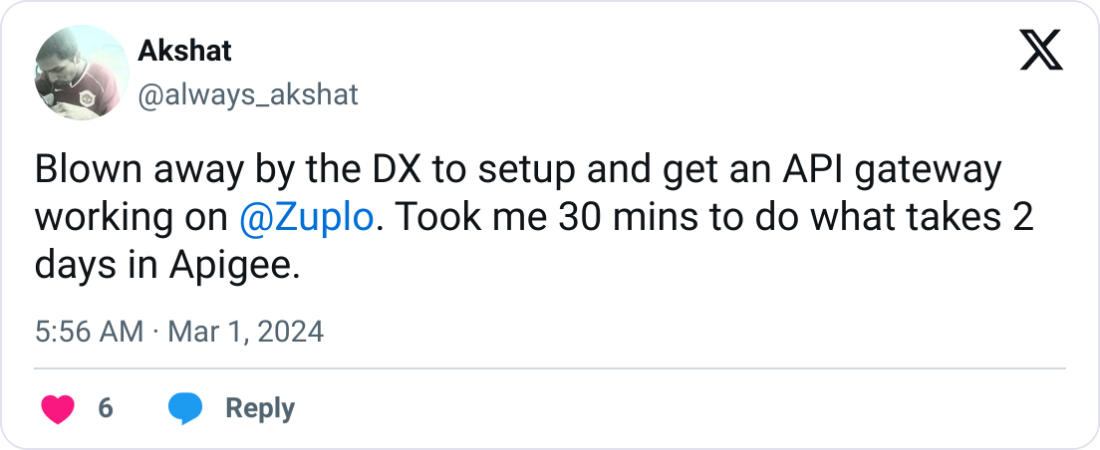APIs power everything from mobile apps to IoT devices, creating digital highways that connect our software ecosystems. But like any busy highway, traffic anomalies can signal trouble ahead. When unusual patterns emerge in your API traffic, they often point to potential threats or performance issues that need immediate attention.
Think of real-time anomaly detection as your API's security camera system—constantly monitoring for suspicious activities that deviate from normal behavior. Without this vigilance, malicious actors can exploit vulnerabilities, exfiltrate data, or crash your services before you even realize there's a problem.
The consequences extend beyond just downtime, rippling into customer trust issues and potential compliance nightmares. Let's take a look at how you can build an effective early warning system that catches API anomalies before they turn into major incidents.
- Understanding What Lurks in Your API Traffic
- The Real-Time Advantage: Why Minutes Matter
- Building Your Detection Arsenal: Components and Methodologies
- Implementation Strategies for Any Environment
- Practical Implementation Guide: From Theory to Practice
- Measuring Success: KPIs for API Anomaly Detection
- The Future of API Defense: Emerging Trends
- Building a Proactive API Security Posture: Your Next Steps
Understanding What Lurks in Your API Traffic#
API traffic anomalies are unexpected patterns or behaviors in API usage that deviate from normal operations. Think of them as the digital equivalent of something feeling "off" in your home—that moment when you notice an unfamiliar sound that signals potential trouble.
Security-Based Anomalies#
Security anomalies represent potentially malicious activities targeting your APIs. These are the digital break-in attempts that could compromise your entire system if left undetected. Implementing effective methods for monitoring access patterns is crucial in identifying these threats. Establishing clear security policies, including procedures for reporting security vulnerabilities, is essential in combating these threats.
- DDoS Attacks: Sudden request floods from multiple sources, overwhelming your servers.
- Injection Attacks: Unusual API requests containing malicious code meant to manipulate your servers, often spotted through strange request parameters that don't match normal usage patterns.
- Credential Stuffing: Repeated authentication attempts across multiple accounts, typically showing higher-than-normal failure rates. Proper authentication methods, like simple HTTP authentication, are essential to prevent such security-based anomalies.
- Broken Authentication Patterns: Unusual sequences of API calls that attempt to bypass your security measures, like someone trying different combinations on a lock.
Performance-Based Anomalies#
Performance anomalies indicate issues affecting your API's operational efficiency and reliability—the warning lights on your API dashboard.
- Response Time Degradation: Sudden increases in API response times without corresponding request volume growth.
- Elevated Error Rates: Spikes in 4xx or 5xx HTTP status codes deviating from historical baselines.
- Resource Exhaustion: Degraded performance across multiple metrics as your system approaches limits (something you can mitigate with effective API rate limiting).
- Cascading Failures: Failures that propagate through interconnected API systems, creating a chain reaction of issues throughout your architecture.
Business Logic Anomalies
Business logic anomalies relate to how your API is being used from a functional perspective—the weird behaviors that might indicate someone using your system in unintended ways.
- Unusual Data Access Patterns: Requests targeting specific data resources at volumes or frequencies differing from normal operations.
- Atypical Request Timing: API activities occurring during unusual hours or with unexpected frequency patterns.
- Abnormal Feature Usage: Unusual patterns in how specific API endpoints are used, potentially indicating vulnerability exploitation attempts.
- Unusual Geographic Access: Requests from unexpected geographic locations that may signal compromised accounts or coordinated attacks.
The Real-Time Advantage: Why Minutes Matter#

Real-time analysis continuously monitors API traffic as it happens, enabling immediate detection and response to potential threats. Contrast this with batch processing, which analyzes logs after the fact—sometimes hours or even days later. By then, attackers have already accomplished their objectives, whether data theft, service disruption, or establishing persistence in your environment.
Critical Time Windows for Different Attack Types#
Different API attacks have different time-to-impact windows, making real-time detection crucial:
- Credential Stuffing and Brute Force Attacks: These require detection within minutes to prevent account compromise.
- Data Exfiltration: Detecting abnormal data access patterns in real time can stop massive data theft before significant volumes leave your environment.
- Business Logic Exploitation: Attacks that manipulate your API's intended functionality can cause damage in seconds if not detected immediately.
According to Salt Security, 91% of API attacks use valid credentials and legitimate access, making them particularly difficult to detect without real-time behavioral analysis.
Business Impact of Detection Speed#
The business implications of detection speed are profound and directly impact your bottom line:
- Reduced Breach Costs: Organizations that contain breaches within 30 days save an average of $1 million compared to those that take longer.
- Minimized Data Exposure: Real-time detection can stop attacks mid-execution, limiting the volume of compromised records.
- Preserved Business Continuity: Catching attacks like DDoS attempts in real time prevents revenue losses associated with downtime.
- Enhanced Customer Trust: Preventing breaches rather than merely responding to them preserves your reputation.
Building Your Detection Arsenal: Components and Methodologies#
To build a robust real-time API anomaly detection system, you'll need several critical components working in concert. Leveraging essential API monitoring tools can help you effectively implement and manage these components.
- Data Collection Layer: Gathers relevant API traffic metrics with minimal latency.
- Processing Engine: Analyzes incoming data streams against established baselines using statistical models and machine learning algorithms.
- Knowledge Base: Stores historical patterns, known attack signatures, and baseline metrics that define "normal" behavior.
- Alert Management System: Determines anomaly severity, triggers appropriate alerts, and initiates automated responses.
- Integration Interface: Connects with existing security infrastructure and incident response workflows.
For optimal performance, consider implementing these components using edge computing technologies to reduce latency and enable faster detection and response times.
Choosing the Right Detection Methodology#
There are two primary approaches to API anomaly detection:
Statistical Methods#
Statistical approaches establish normal baselines for your API traffic and identify deviations from these expected patterns, including:
- Moving Averages: Track metrics over sliding time windows to detect sudden changes.
- Standard Deviation Analysis: Flag values that fall outside a statistical range of normal behavior.
- Percentile-Based Thresholds: Identify outliers based on historical distributions.
Statistical methods are particularly effective for metrics with predictable patterns. Apigee's anomaly detection system uses statistical models to analyze six hours of historical traffic data, establishing baselines that help identify unusual patterns in real time.

Over 10,000 developers trust Zuplo to secure, document, and monetize their APIs
Learn MoreMachine Learning Approaches#
For complex API traffic patterns or subtle anomalies, machine learning methods offer significant advantages:
- Unsupervised Learning: Techniques like clustering algorithms, Isolation Forest, and Local Outlier Factor to identify outliers.
- Supervised Learning: Classification algorithms and ensemble models to categorize traffic as normal or anomalous.
- Deep Learning: Recurrent Neural Networks (RNNs), autoencoders, and Convolutional Neural Networks (CNNs) to identify complex patterns.
The most effective anomaly detection systems often combine both statistical and machine learning methods, using statistical approaches for obvious anomalies while employing sophisticated machine learning models for detecting subtle patterns that might indicate advanced persistent threats.
Implementation Strategies for Any Environment#

Implementing effective API anomaly detection requires tailored approaches depending on your infrastructure. Understanding the advantages of hosted API gateways can influence your implementation strategy. Whether you're fully in the cloud, maintaining on-premises systems, or somewhere in between, there's an implementation strategy that fits your needs.
Cloud-Based APIs#
Cloud environments offer scalable, managed solutions that simplify detecting API traffic anomalies in real time:
- Leverage Cloud Services: You can either use the basic, built-in options like AWS API gateway + AWS WAF - or use more advanced and flexible solutions like Zuplo + Cloudflare WAF
- Implement Traffic Analysis at Edge Locations: Solutions like Akamai's API Security identify suspicious patterns before traffic reaches your origin servers.
- Utilize Cloud-Native Observability Tools: Integrated monitoring solutions like Amazon CloudWatch, Google Cloud Monitoring, and Azure Monitor. We have a full list of API observability tools for you to explore.
- Automate Response Actions: Use serverless functions, auto-scaling, and automated IP blocking when suspicious patterns emerge.
On-Premises API Infrastructure#
Organizations with on-premises infrastructure can implement:
- Dedicated Security Appliances: Purpose-built WAFs, network traffic analyzers, and API gateways (ex. Zuplo).
- Local Machine Learning Systems: Self-hosted solutions using open-source tools like TensorFlow or vendor solutions like Traceable AI.
- Robust Monitoring Infrastructure: Metrics collection with tools like Prometheus, log aggregation with ELK stack, and visualization with Grafana.
- Internal Response Teams: Dedicated security operations teams with clear incident response playbooks.
Hybrid Environments#
For hybrid deployments combining cloud and on-premises infrastructure:
- Implement Consistent Policies Across Environments: Use centralized policy management with standardized detection thresholds.
- Leverage Cloud Services for Enhancement: Utilize cloud-based machine learning while keeping API traffic local.
- Implement Cross-Environment Visibility: Deploy monitoring solutions that aggregate data from both cloud and on-premises systems.
- Deploy API Gateways at Environmental Boundaries: Position gateways at transition points with consistent security controls.
Practical Implementation Guide: From Theory to Practice#
Let's walk through how to build a system that doesn't just detect problems but crushes potential threats before they wreak havoc.
Setting Intelligent Baselines#
To set effective baselines:
- Collect Historical Data: Analyze at least 6-8 weeks of API traffic data to capture typical usage patterns.
- Identify Key Metrics: Focus on request volume, response times, error rates, payload sizes, and unique user counts.
- Segment by Dimensions: Break down baselines by time of day/week, geographic region, client application, and user type.
- Calculate Statistical Thresholds: Establish bounds using standard deviations, percentile-based thresholds, and rate-of-change limits.
- Implement Adaptive Baselines: Configure your system to automatically recalibrate as new data arrives using techniques like exponential smoothing.
Real-Time Data Processing Pipeline#
Build a pipeline that keeps pace with your API traffic:
- Data Ingestion Layer: Capture relevant API traffic data from gateways, APM metrics, server logs, and custom instrumentation.
- Stream Processing System: Implement solutions like Apache Kafka, Flink, or Tinybird for high-volume data handling.
- Feature Extraction: Transform raw logs into actionable features by calculating moving averages, extracting patterns, and aggregating by relevant dimensions.
- Anomaly Detection Algorithms: Implement threshold-based rules, statistical methods, and machine learning models appropriate for your use case.
- Performance Optimization: Ensure your pipeline handles your traffic volume through sampling, caching, and horizontal scaling.
Response Automation Framework#
Implement fast-acting responses:
- Tiered Alerting System: Create multiple severity levels with appropriate notification channels.
- Rate Limiting and Throttling: Configure your API gateway to impose limits on suspicious traffic.
- Circuit Breakers: Protect downstream systems with fallback responses and graceful degradation.
- Forensic Data Capture: Increase logging verbosity and preserve detailed information when anomalies occur.
- Remediation Playbooks: Define standard procedures for common anomaly types.
- Feedback Loops: Track outcomes to improve your detection system over time.
Measuring Success: KPIs for API Anomaly Detection#
To evaluate your anomaly detection capabilities, use these key metrics:
Technical Performance Metrics#
-
Detection Accuracy
- Precision Rate: Target at least 90% to minimize false positives.
- Recall Rate: Aim for at least 85% for comprehensive protection.
- F1 Score: Should be above 0.8 to indicate a well-tuned system.
- False Positive Rate: Target below 5% to avoid alert fatigue.
-
Speed Metrics
- Detection Latency: Should be under 30 seconds for real-time systems.
- Processing Throughput: Volume of API requests analyzed per second.
- Alert Generation Time: Should be nearly instantaneous (< 5 seconds).
-
System Reliability
- Uptime of Detection System: Aim for at least 99.9% availability.
- Model Drift Rate: Retrain when accuracy drops by 5%.
Business-Oriented Metrics#
-
Impact Prevention
- Prevented Breach Value: Estimated financial value of prevented attacks.
- Service Availability Preservation: Percentage of potential downtime prevented.
- Data Protection Efficacy: Measure of sensitive data protected.
-
Operational Efficiency
- Mean Time to Resolve (MTTR): Average time from detection to resolution.
- Investigation Time Reduction: Time saved due to better detection information.
- Automated Response Rate: Percentage of anomalies handled automatically.
-
Cost Metrics
- Total Cost of Ownership (TCO): Full cost including licensing, infrastructure, and personnel.
- Return on Security Investment (ROSI): Money saved versus cost of the detection system.
- Resource Utilization Efficiency: Efficiency of computing resources used.
The Future of API Defense: Emerging Trends#
The field of API anomaly detection continues to evolve rapidly, with several emerging technologies that will transform protection capabilities:
AI and Machine Learning Advancements#
Machine learning is revolutionizing detection with increasingly sophisticated models:
- Adaptive Learning Systems that continuously improve by incorporating new data patterns.
- Behavioral Analysis Engines that build comprehensive profiles of normal API usage.
- Deep Learning Frameworks specifically designed for complex API traffic analysis.
Akamai's API Security exemplifies this trend with advanced statistical analysis to establish baselines and identify anomalies through sophisticated pattern recognition.
Edge Computing Integration#
Edge computing transforms detection by moving processing closer to data sources:
- Drastically Reduced Latency enabling near-instantaneous detection and response.
- Distributed Processing that scales more effectively across complex ecosystems.
- Enhanced Data Privacy by processing sensitive information locally.
A recent framework integrating federated learning with edge computing demonstrates significant improvements in detection efficiency across diverse environments.
Context-Aware Detection Systems#
Next-generation systems are becoming increasingly context-aware:
- Business Logic Integration that understands the specific purpose of different APIs.
- User Behavior Analytics that correlate API usage with specific user profiles.
- Cross-System Correlation that connects API activity with other security telemetry.
Traceable AI helped a neobank implement context-aware detection that successfully identified attempted data exfiltration by understanding both technical and business contexts.
Real-Time Collaborative Defense#
Organizations are adopting collaborative approaches to API security:
- Security Knowledge Sharing platforms allowing companies to benefit from cross-industry intelligence.
- Automated Threat Response Networks coordinating defensive measures across organizations.
- API Security Standardization efforts establishing common protocols for detection and response.
Autonomous Response Capabilities#
Future detection includes not just identifying issues but automatically addressing them:
- Self-Healing Systems that adjust configurations to mitigate detected threats.
- Dynamic Throttling Mechanisms that intelligently limit suspicious traffic.
- Adaptive Security Postures that evolve based on changing threat landscapes.
Building a Proactive API Security Posture: Your Next Steps#
Real-time anomaly detection isn't just another security checkbox—it's the early warning system your APIs desperately need. Moreover, API security risks constantly evolve, which means you need to treat anomaly detection as a continuously improving capability. The best organizations view real-time anomaly detection as a competitive advantage that lets them detect suspicious API traffic while maintaining the agility to rapidly deploy new services. Your API security is only as good as your detection capabilities—make them exceptional.
Ready to transform your API security? Start with comprehensive visibility, implement basic security measures, and integrate real-time anomaly detection that evolves with your business. Remember that API security is a journey, not a destination. Zuplo's developer-friendly platform provides the tools you need to detect and respond to API anomalies in real time. Sign up for a free Zuplo account today and take the first step toward robust API protection.